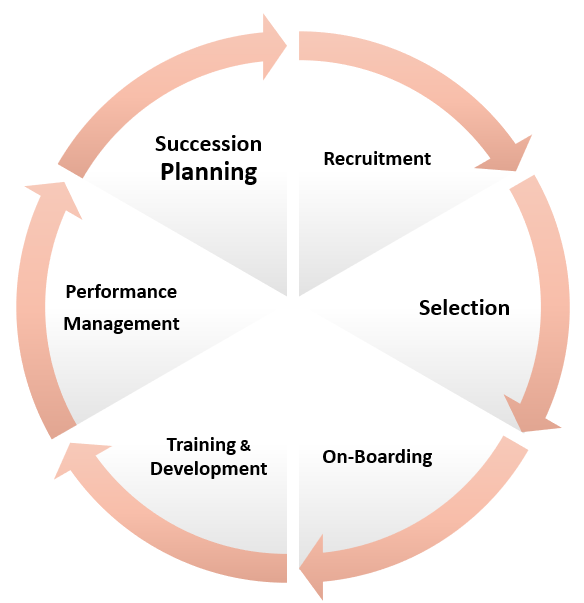Essentials of Talent Management Process
Most organisations today understand the significance of their human capital and the value of their talent to meet business goals and objectives. Talent management focus on providing strategic assistance to organisation in the accomplishment of long-term enterprise goals with respect to human capital. The term Talent management gained popularity in the late 1990s.
Having good talent means employing one with good skills, knowledge, intellectuality, and the potential to do well. If someone has all the competency skills and are good at what they do, the company would like to retain them forever. Most employees are either satisfied with the job they have or if not, they go out and look for better opportunities. Finding capable and potential candidates is not a challenging task, but making sure that they stick, contribute and are loyalists- willing to stay in the same business for a longer term, is the real challenge.
Talent management involves development (both organisation as well as individual) in response to changing and complex operating environment. It includes the creation and maintenance of organisation culture.
Talent management brings together a number of important human resources and management initiatives. Organisations that formally decide to “manage their talent” undertake a strategic analysis of their current HR processes. This is to ensure that a co-ordinated, performance and oriented approach is adopted.
- Competency frameworks
A competency framework is essentially the lingua franca of capability in the organisation. Competency frameworks (easy to develop with the right agile performance management tools) help drive consistency within the business when recruiting employees, managing their performance and developing them. It can perform a pivotal role in ensuring everyone understands what is expected of them in a specific role and for a given context. An effective talent management strategy should begin with competency framework development that will serve as the foundation for future talent management initiatives.
- Culture of learning
A job should not solely be filled based on past experience and performance, but on the employee’s potential and aptitude to adapt to a new role. That’s why ensuring continuous informal and formal learning and development is key to help develop new skills and prepare for a new role. Personalised learning will also create better engagement and will likely help retain talent.
- Performance management
The managing of talent in the organisation reaches into agile performance management. To implement a talent management strategy it is important to understand performance. Analytics and comprehensive talent management system solutions that have a performance capability will help with this as it brings the data into one place and provides managers with clear indicators on talent strategy implementation and performance issues.
- Succession planning
Succession planning is all about knowing the needs of your organisation and developing the capacity to address these needs when and even before they arise. But how do you anticipate your future talent needs? The key to effective succession planning is to be aligned with your overall talent management strategy, which then includes your training initiatives, performance management, career development and recruitment. Collecting all these statistics will help you figure out who is competent for a role ready to be filled or who needs to improve their skills. Combining the data from all these initiatives in one place will help build one central talent pool, where you can easily spot the high potentials ready to step into a key role.
- Career development and career pathing
While performance management is all about developing the skills and competencies of your workforce to meet the organisation’s needs, career development is about supporting your employees to develop and realise their potential. Understanding their strengths, skill gaps and interests is the first step in the career development process. While learning and training will be fundamental parts of your employees’ career development, structured coaching will give them the necessary feedback they need to grow professionally. By facilitating conversations with their manager on a regular basis, the employee will gain insight into their performance and skills to work on.
It is important for employees to understand what opportunities exist within the organisation and how they can work towards them. A robust talent management system will facilitate this and give a clear development path for employees to follow based on their aspirations. This is also a clear signal to employees that the organisation is willing to invest in them which is proven to improve employee retention and motivation.
Four Steps to making talent management a core competence
Step 1: Identify Key Roles: Analyze the key steps in the talent life cycle (identification and attraction, hiring and inculcation, motivation and development, appraisal and reward, building and sustaining relationships) and map the key players, their roles in each stage.
Step 2: Take an Inventory of Your Talent Management Skills. Identify the critical skills needed to play the key roles.
Step 3: Measure the Right Things. Assess the measures to evaluate the performance of your talent management process at each life cycle stage.
Step 4: Set Up a Process-Wide Feedback Loop. Everyone managing talent needs to understand the big picture and to connect their role and responsibilities to the overall objectives of the process.
